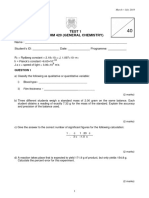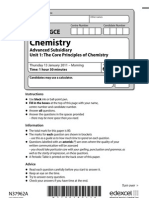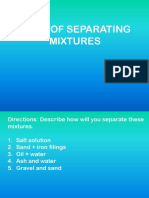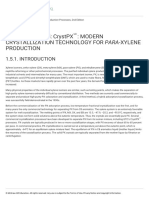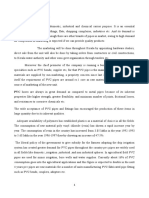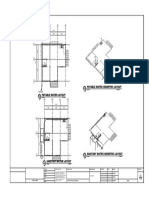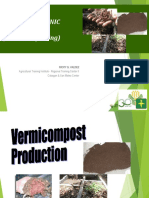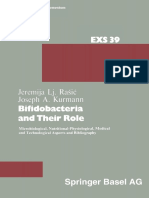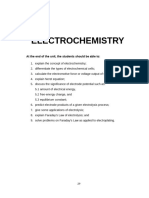Department of Chemistry
Total %
Test 2 – CHE105P (Memorandum)
Student number
FOR OFFICE USE ONLY
Surname and initials
QUESTION MARKS ALLOCATED BY
Subject: name (code): CHE105P Duration: 90 Minutes EXAMINER MODERATOR
Course: Environmental Health Date: 13 June 2024 2
4
Faculty: Science Department: Chemistry
5
6
Examiner(s): Mr. ND Thobejane Moderator(s): Dr MF Mashigo
7
Mr. GH Rakodi
8
Total number of pages: 7 Paper description: Closed 9
10
11
Total number of annexures: 1 Special Requirements:
12
TOTAL 55
Total Marks: 55 Full Marks: 55
FULL MARKS 55
Examination
mark
DECLARATION Signature
I hereby subject myself to the rules and regulations of
Tshwane University of Technology (see back page for examination rules)
SIGNATURE OF CANDIDATE
NB: PLEASE TURN PAGE FOR INSTRUCTIONS
� INSTRUCTIONS TO CANDIDATES
1. By writing your student number on this test answer book, you confirm that you are familiar
with the examination regulations of the University of Technology.
2. Students must ensure that their student numbers, surnames and initials are written
correctly. Your student number must also be written in the right-hand corner of each loose
sheet of writing paper, graphs and loose appendices.
3. Only non- programmable pocket calculators may be used. The calculator facility of
cellular phones may not be used as a calculator during assessments.
4. All written test answers must be in black or blue ink.
5. Write in a neat and clear handwriting, using both sides of the paper. Leave margins clear for
the use of the examiner.
6. Number answers strictly according to the questions and skip a line to indicate a break
between subsections. Draw a line after each question/answer section.
7. Students must do rough work inside the script. If any part of the work must not be marked,
a line must be drawn through it.
8. No pages may be removed from the test booklet or pages inserted.
9. A student may not, under any circumstances, communicate with another candidate or
obtain assistance from outside the assessment room.
10. No student will be allowed to leave the test venue before at least 30 minutes have expired
after the commencement of the test.
11. No explanations of questions may be requested or provided.
12. The invigilator may disqualify any candidate for unfair practices or unsatisfactory conduct.
13. Students are responsible to submit the test book with loose appendices to the invigilator
at the end of the written test. Students may take their question papers with them when they
leave.
14. A student may not disregard any assessment instruction given by the invigilator.
�CHE105P Test 2 13 June 2024`
QUESTION 1 NOMENCLATURE; ATOMS, IONS AND MOLECULE [18]
1.1 Write the correct names and formula of each of the following compounds: (4)
1.1.1 Iron (II) phosphate Fe3(PO4)2 √
1.1.2 Ba(ClO2)2 Barium chlorite √
1.1.3 Bromic Acid HBrO3 √
1.1.4 NO2 Nitrogen dioxide √
1.2 Octane is a major component in petrol, a fuel used in combustion engines. A complete
combustion of this compound in excess oxygen produces carbon dioxide and water.
Determine the number of CO2 molecules produced if a vehicle consumes 8.2 L of
octane (D= 0.703 g/mL) per 100 km.
(8)
2 C8H18 (l) + 25 O2 (g) 16 CO2 (g) + H2O (l)
1 L = 1000 mL
8.2 L = X
X = 8200 mL per 100 km √
Mass of CO2 per 100 Km’s:
Density = mass (g) / Vol (mL)
0.703 g/mL = mass / 8200 mL
Mass = 5764.6 g √√
Moles of CO2 : 5764.6 g / 114.2302 g/mol = 50.4648 moles √√
Moles of CO2 C8H18 : CO2
2 : 16 √
50.4648 mol: X
X = 403.7181 moles CO2 √
Molecules of CO2 per 100 km’s
Avogadro’s number: 6.022 x 1023 molecules / mol
Number of CO2 molecules : 6.022 x 1023 molecules/mol x 403.7181 mol √
= 2.4312x1027 molecules of CO2 per 100 km’s √
3
�CHE105P Test 2 13 June 2024`
1.3 Complete the table given below: (6)
Element / Ion Protons Electrons Neutrons Mass number
Se2- 34 √ 36√ 45 79 √
H+ √ 1√ 0 0 1√
4
�CHE105P Test 2 13 June 2024`
QUESTION 2 CHEMICAL REACTIONS AND STOICHIOMETRY [37]
2.1 Identify and balance the chemical reactions given below: (9)
2.1.1 NH4NO3 (s) N2O (g) + 2 H2O (g) √√ (decomposition) √
2.1.2 C5H6O (l) + 6 O2 (g) 5 CO2 (g) + 3 H2O (l) √√ (combustion) √
2.1.3 K2O (s) + H2O (l) 2 KOH (aq) √√ (combination / synthesis) √
2.2 Determine percentage composition of ibuprofen (C13H18O2). (5)
Molar mass: 206.284 g/mol √
%Element = (molar mass of element / molar mass of compound) x 100% √
%C = [(13 x 12.011) / 206.284] x 100% = 75.7% √
%H = [(18 x 1.0079) / 206.284] x 100% = 8.80% √
%O = [(2 x 15.9994) / 206.284] x 100% = 15.5% √
2.3 A hormone released when your body experiences a great amount of stress from an
environment is epinephrine (adrenaline), a compound consisting of C, H, N and O.
Elemental analysis showed that, the compound contain 59.0% C, 7.1% H and 26.2%
O. (8)
2.3.1 Determine empirical formula of epinephrine.
% N = 100% - (%C + %H + %O) = 7.7% √
Assume 100 g sample √
Mass of element Moles of each Ratio (divide with
smallest moles)
C = 59.0 g 4.9122 mol 8.936 ≈ 9 √
H = 7.1 g 7.0443 mol 12.8148 ≈ 13 √
N = 7.7 g 0.5497 mol 2.9790 ≈ 3 √
O = 26.2 g 1.6376 mol 1√
Empirical formula of epinephrine: C9H13N3O √√
5
�CHE105P Test 2 13 June 2024`
2.3.2 Determine molecular formula of epinephrine (molar mass = 183 g/mol). (4)
Whole number multiple = Molar mass of the compound / molar mass of empirical formula
= 183 / 183.2066
= 0.982 ≈ 1
Molecular formula: C9H13N3O
2.4 Hydrogen sulfide is a poisonous gas commonly found in natural gas as an impurity.
The impurity is commonly removed via an industrial process called Claus process
following the reaction equation given below. The removal process achieves 98% yield
of the pure product.
8 H2S (g) + 4 O2 (g) S8 (l) + 8 H2O (g)
2.4.1 Identify the limiting reagent if the reaction is initiated with 30.0 g H2S and 15.0 g O2.
(7)
1 𝑚𝑜𝑙 𝐻2𝑆 1 𝑚𝑜𝑙 𝑆8
Moles of S8 from H2S: 30.0 g H2S x 34.0818 𝑔 𝐻2𝑆 x 8 𝑚𝑜𝑙 𝐻2𝑆 = 0.1100 moles
1 𝑚𝑜𝑙 𝑂2 1 𝑚𝑜𝑙 𝑆8
Moles of S8 from O2 : 15.0 g O2 x 31.9988 𝑔 𝑂2 x 4 𝑚𝑜𝑙 𝑂2 = 0.1172 moles
H2S gives the smallest moles of S8 thus it is a limiting reagent.
2.4.2 Determine the actual yield of the reaction (4)
Theoretical yield: 0.1100 mol x 256.528 g/mol = 28.2181 g
Mass of pure S8 recovered from the process:
𝐴𝑐𝑡𝑢𝑎𝑙 𝑦𝑖𝑒𝑙𝑑
98% = 𝑡ℎ𝑒𝑜𝑟𝑖𝑐𝑎𝑙 𝑦𝑖𝑒𝑙𝑑 x 100%
Actual yield = 27.65 g
6
�CHE105P Test 2 13 June 2024`
APPENDIX











